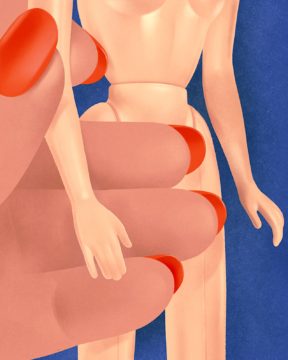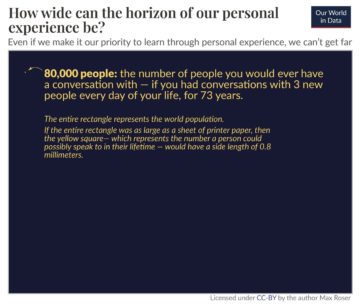Edward Carver in LA Review of Books:
WHEN HE died unexpectedly in 2020, American anthropologist and left-wing activist David Graeber was best known for his 2011 book Debt: The First 5,000 Years, a revisionist history of money, and his involvement in Occupy Wall Street. He helped coin the catchphrase “We are the 99 percent.”
But before he became a swashbuckling public intellectual, his work focused on Madagascar, where he did doctoral research on the legacy of slavery in a highlands village. In his posthumous new book, Pirate Enlightenment, or The Real Libertalia, he returns to the subject of Madagascar to tell a story that challenges Eurocentric ideas about the origins of the Enlightenment.
Pirate Enlightenment was first published in French in 2019. The publishing house that released it, Libertalia, is in fact named after a pirate utopia in Madagascar that was depicted in an English-language book in the 1720s but probably didn’t exist. Graeber is interested in the legend only insofar as it indicates the kind of political stories that were circulating in European coffeehouses. He regards it as a European fantasy, in which the Malagasy act only as antagonists to the utopians in the tale. The “Real Libertalia” of Graeber’s book is, in contrast, about the political arrangements of the Malagasy.
This builds on Graeber’s other work, including “There Never Was a West, or Democracy Emerges from the Spaces In Between,” a 2007 essay in which he argues that the ideas of freedom, democracy, and equality are not principally Western. In The Dawn of Everything: A New History of Humanity (2021), he and co-author David Wengrow, an archaeologist, dig up evidence that many complex societies existed without much hierarchy and that Enlightenment conceptions of human liberation flowed from many ancient and Indigenous traditions.
More here.

 Poornima Paidipaty interviews Pranab Bardhan in Phenomenal World:
Poornima Paidipaty interviews Pranab Bardhan in Phenomenal World: Sophus Helle in Aeon:
Sophus Helle in Aeon: I
I In 1955 Henry Pleasants, a critic of both popular and classical music, issued a cranky screed of a book, “The Agony of Modern Music,” which opened with the implacable verdict that “serious music is a dead art.” Pleasants’s thesis was that the traditional forms of classical music — opera, oratorio, orchestral and chamber music, all constructions of a bygone era — no longer related to the experience of our modern lives. Composers had lost touch with the currents of popular taste, and popular music, with its vitality and its connection to the spirit of the times, had dethroned the classics. Absent the mass appeal enjoyed by past masters like Beethoven, Verdi, Wagner and Tchaikovsky, modern composers had retreated into obscurantism, condemned to a futile search for novelty amid the detritus of a tradition that was, like overworked soil, exhausted and fallow. One could still love classical music, but only with the awareness that it was a relic of the past and in no way representative of our contemporary experience.
In 1955 Henry Pleasants, a critic of both popular and classical music, issued a cranky screed of a book, “The Agony of Modern Music,” which opened with the implacable verdict that “serious music is a dead art.” Pleasants’s thesis was that the traditional forms of classical music — opera, oratorio, orchestral and chamber music, all constructions of a bygone era — no longer related to the experience of our modern lives. Composers had lost touch with the currents of popular taste, and popular music, with its vitality and its connection to the spirit of the times, had dethroned the classics. Absent the mass appeal enjoyed by past masters like Beethoven, Verdi, Wagner and Tchaikovsky, modern composers had retreated into obscurantism, condemned to a futile search for novelty amid the detritus of a tradition that was, like overworked soil, exhausted and fallow. One could still love classical music, but only with the awareness that it was a relic of the past and in no way representative of our contemporary experience. My childhood Barbies were always in trouble. I was constantly giving them diagnoses of rare diseases, performing risky surgeries to cure them, or else kidnapping them—jamming them into the deepest reaches of my closet, without plastic food or plastic water, so they could be saved again, returned to their plastic doll-cakes and their slightly-too-small wooden home. (My mother had drawn her lines in the sand; we had no Dreamhouse.) My abusive behavior was nothing special. Most girls I know liked to mess their Barbies up; and when it comes to child’s play, crisis is hardly unusual. It’s a way to make sense of the thrills and terrors of autonomy, the problem of other people’s desires, the brute force of parental disapproval. But there was something about Barbie that especially demanded crisis: her perfection. That’s why Barbie needed to have a special kind of surgery; why she was dying; why she was in danger. She was too flawless, something had to be wrong. I treated Barbie the way a mother with
My childhood Barbies were always in trouble. I was constantly giving them diagnoses of rare diseases, performing risky surgeries to cure them, or else kidnapping them—jamming them into the deepest reaches of my closet, without plastic food or plastic water, so they could be saved again, returned to their plastic doll-cakes and their slightly-too-small wooden home. (My mother had drawn her lines in the sand; we had no Dreamhouse.) My abusive behavior was nothing special. Most girls I know liked to mess their Barbies up; and when it comes to child’s play, crisis is hardly unusual. It’s a way to make sense of the thrills and terrors of autonomy, the problem of other people’s desires, the brute force of parental disapproval. But there was something about Barbie that especially demanded crisis: her perfection. That’s why Barbie needed to have a special kind of surgery; why she was dying; why she was in danger. She was too flawless, something had to be wrong. I treated Barbie the way a mother with  It has been a hundred years since D.H. Lawrence published “Studies in Classic American Literature,” and in the annals of literary criticism the book may still claim the widest discrepancy between title and content.
It has been a hundred years since D.H. Lawrence published “Studies in Classic American Literature,” and in the annals of literary criticism the book may still claim the widest discrepancy between title and content. It’s 1965. Truman Capote was a known figure on the literary scene and a member of the global social jet set. His bestselling books Other Voices, Other Rooms and Breakfast at Tiffany’s had made him a literary favorite. And after five years of painstaking research, and gut-wrenching personal investment, part I of In Cold Blood debuted in The New Yorker. As people across the country opened their magazines and read the first lines of the story, they were riveted. Overnight, Capote catapulted from a mere darling of the literary world to a full-fledged global celebrity on a par with the likes of rockstars and film legends.
It’s 1965. Truman Capote was a known figure on the literary scene and a member of the global social jet set. His bestselling books Other Voices, Other Rooms and Breakfast at Tiffany’s had made him a literary favorite. And after five years of painstaking research, and gut-wrenching personal investment, part I of In Cold Blood debuted in The New Yorker. As people across the country opened their magazines and read the first lines of the story, they were riveted. Overnight, Capote catapulted from a mere darling of the literary world to a full-fledged global celebrity on a par with the likes of rockstars and film legends. Mainframe computers are often seen as ancient machines—practically dinosaurs. But mainframes, which are purpose-built to process enormous amounts of data, are still extremely relevant today. If they’re dinosaurs, they’re T-Rexes, and desktops and server computers are puny mammals to be trodden underfoot.
Mainframe computers are often seen as ancient machines—practically dinosaurs. But mainframes, which are purpose-built to process enormous amounts of data, are still extremely relevant today. If they’re dinosaurs, they’re T-Rexes, and desktops and server computers are puny mammals to be trodden underfoot. It’s tempting to believe that we can simply rely on personal experience to develop our understanding of the world. But that’s a mistake. The world is large, and we can experience only very little of it personally. To see what the world is like, we need to rely on other means: carefully-collected global statistics.
It’s tempting to believe that we can simply rely on personal experience to develop our understanding of the world. But that’s a mistake. The world is large, and we can experience only very little of it personally. To see what the world is like, we need to rely on other means: carefully-collected global statistics. When I finally did leave the sex trade after finishing my bachelor’s degree as a mature student, I spent seven years working in “good” jobs in the corporate sector. This meant, as I understood it, that I didn’t work nights, that I was a salaried employee, and that I had dental benefits. I had a shiny access card that opened doors—to a gleaming, marble elevator bank, to planters full of plastic ferns, to blocks of cubicles illuminated by fluorescent lighting, a land of perpetual daytime.
When I finally did leave the sex trade after finishing my bachelor’s degree as a mature student, I spent seven years working in “good” jobs in the corporate sector. This meant, as I understood it, that I didn’t work nights, that I was a salaried employee, and that I had dental benefits. I had a shiny access card that opened doors—to a gleaming, marble elevator bank, to planters full of plastic ferns, to blocks of cubicles illuminated by fluorescent lighting, a land of perpetual daytime. She was not beautiful, but she looked like she was. She was practically famous for it in the cloistered social universe of the liberal arts college where I had just arrived. Women whispered about her effortless elegance in the bathrooms at parties, and a man who had dated her for a summer informed me, with the dispassionate assurance of a connoisseur, that she was the hottest girl on campus. The skier who brazenly dozed in Introduction to Philosophy each morning intimated between snores that she looked like Uma Thurman, whom she did not resemble in the least. I knew this even though I had yet to see her for myself, because I had done what anyone with an appetite for truth and beauty would do in 2011, besides enroll in Introduction to Philosophy: I had studied her profile on Facebook—and discovered, much to my surprise and chagrin, an entirely average-looking person, slightly hunched, with a mop of mousy hair.
She was not beautiful, but she looked like she was. She was practically famous for it in the cloistered social universe of the liberal arts college where I had just arrived. Women whispered about her effortless elegance in the bathrooms at parties, and a man who had dated her for a summer informed me, with the dispassionate assurance of a connoisseur, that she was the hottest girl on campus. The skier who brazenly dozed in Introduction to Philosophy each morning intimated between snores that she looked like Uma Thurman, whom she did not resemble in the least. I knew this even though I had yet to see her for myself, because I had done what anyone with an appetite for truth and beauty would do in 2011, besides enroll in Introduction to Philosophy: I had studied her profile on Facebook—and discovered, much to my surprise and chagrin, an entirely average-looking person, slightly hunched, with a mop of mousy hair. Scientists have come to realize that in the soil and rocks beneath our feet there lies
Scientists have come to realize that in the soil and rocks beneath our feet there lies  Last week, Sinéad O’Connor took off on an early-morning bicycle trip around Wilmette, Illinois, a pleasant suburb of Chicago. The Irish pop singer—now forty-nine, and still best known for ripping up a photograph of Pope John Paul II on “Saturday Night Live,” in 1992, while singing the word “evil,” a remonstrance against the Vatican’s handling of sexual-abuse allegations—had previously expressed suicidal ideations, and, in 2012, admitted to a “very serious breakdown,” which led her to cancel a world tour. Ergo, when she still hadn’t returned from her bike ride twenty-four hours later, the police helicopters began circling. Details regarding what happened next—precisely where O’Connor was found, and in what condition—have been scant, but authorities confirmed her safety by the end of the day.
Last week, Sinéad O’Connor took off on an early-morning bicycle trip around Wilmette, Illinois, a pleasant suburb of Chicago. The Irish pop singer—now forty-nine, and still best known for ripping up a photograph of Pope John Paul II on “Saturday Night Live,” in 1992, while singing the word “evil,” a remonstrance against the Vatican’s handling of sexual-abuse allegations—had previously expressed suicidal ideations, and, in 2012, admitted to a “very serious breakdown,” which led her to cancel a world tour. Ergo, when she still hadn’t returned from her bike ride twenty-four hours later, the police helicopters began circling. Details regarding what happened next—precisely where O’Connor was found, and in what condition—have been scant, but authorities confirmed her safety by the end of the day.